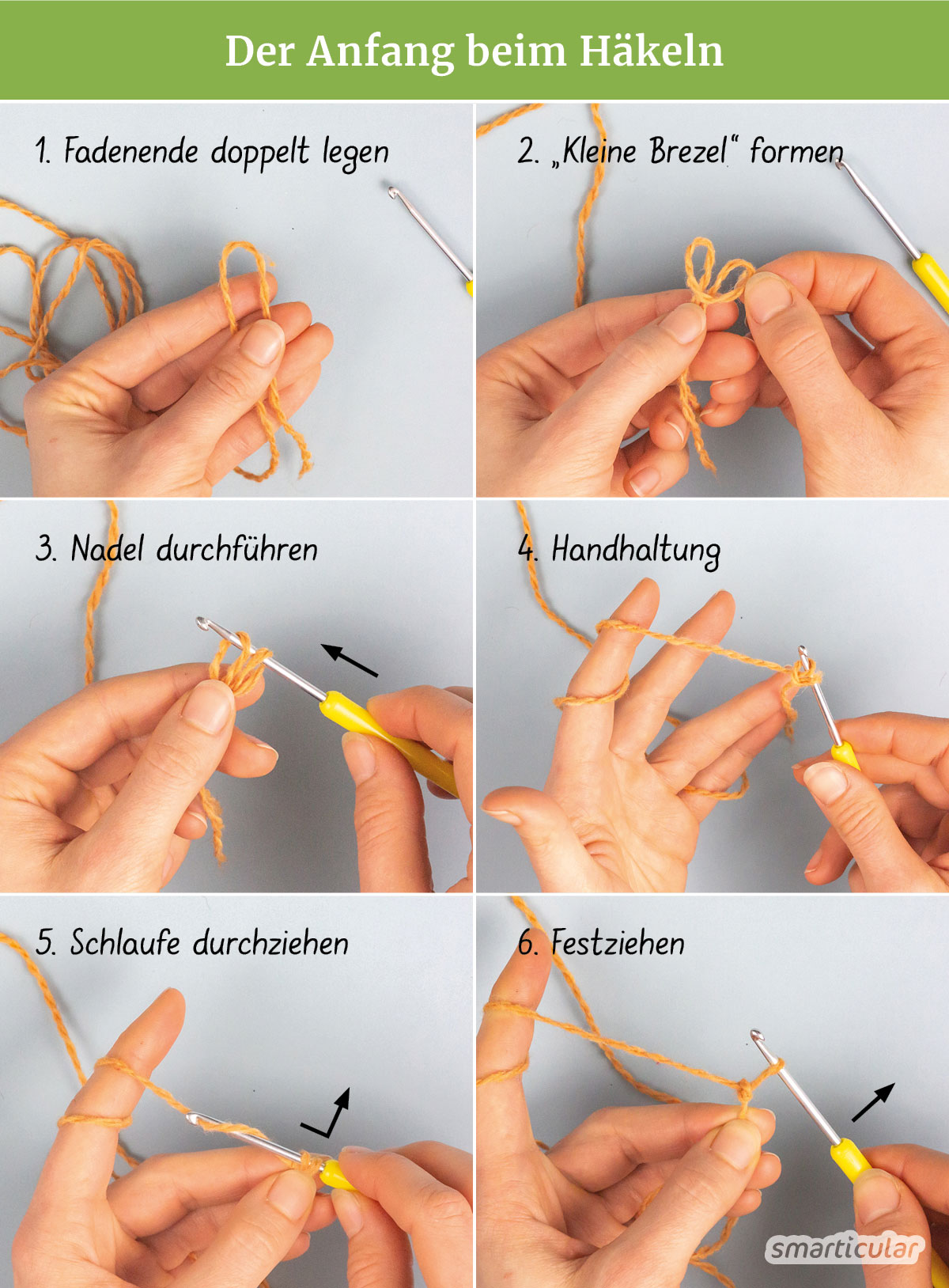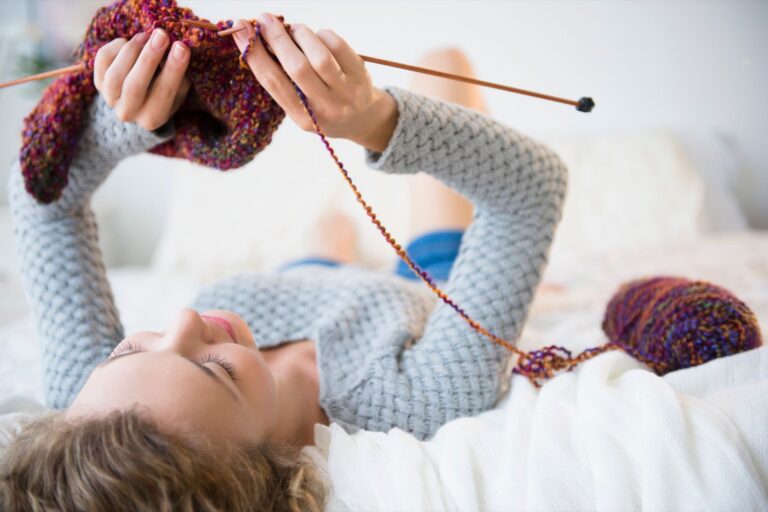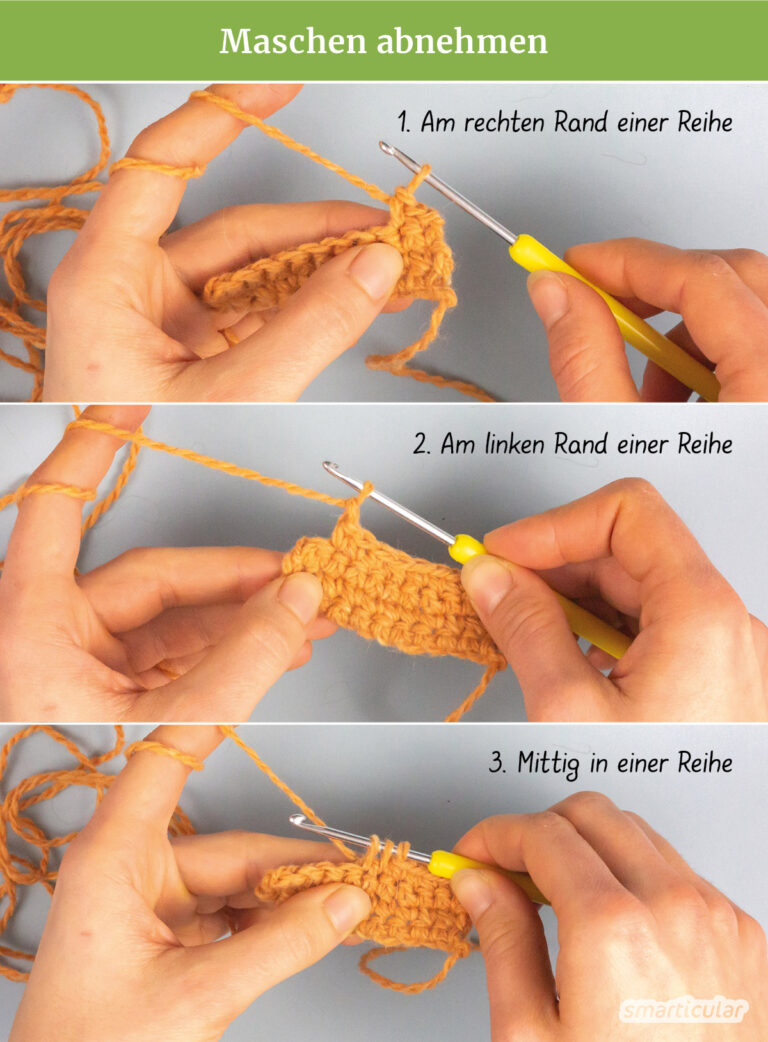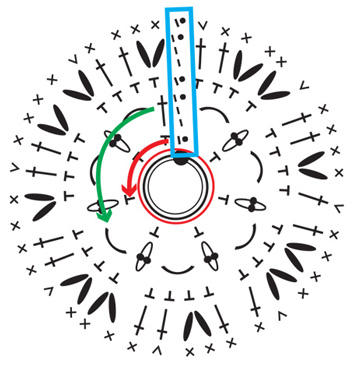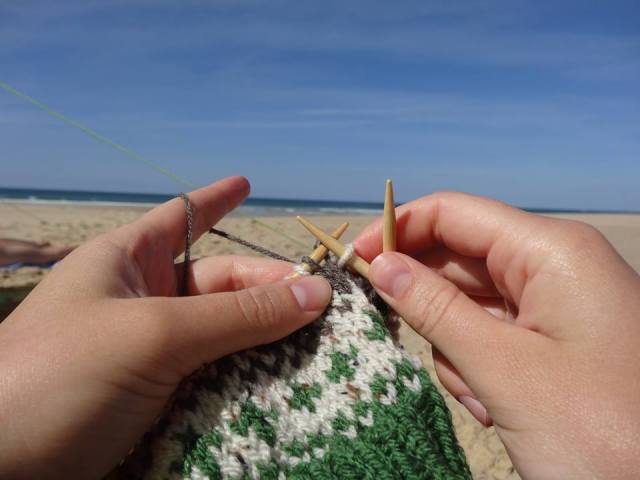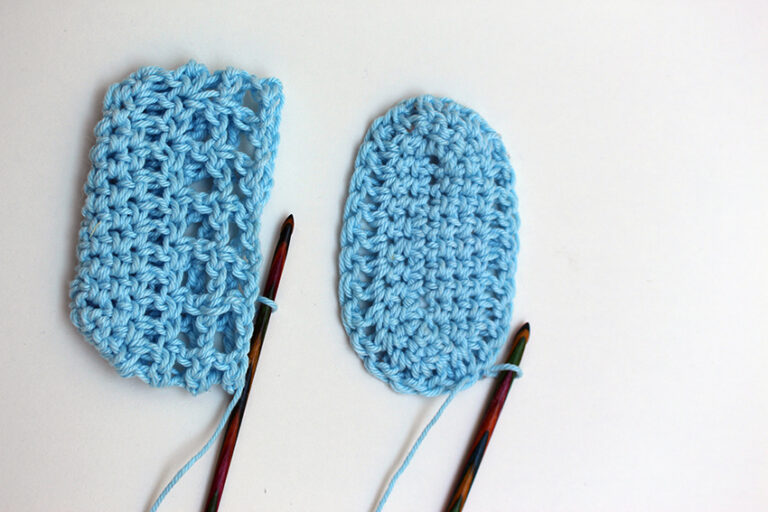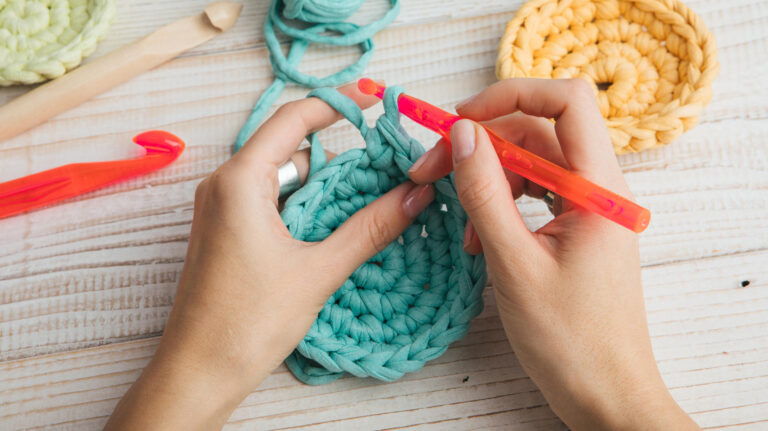Ist Es Schwer Häkeln Zu Lernen
Have you ever wondered if learning how to crochet is a difficult task? Well, fear not! In the article “Ist Es Schwer Häkeln Zu Lernen,” we will explore the world of crocheting and find out just how easy or challenging it may be to pick up this craft. So, whether you’re a complete beginner or someone looking to expand their creative skills, get ready to unravel the secrets of crochet and discover the joy of creating beautiful pieces with just a hook and some yarn.
Benefits of Learning to Crochet
Relaxation and stress relief
Learning to crochet can be a wonderful way to find relaxation and relieve stress. The repetitive motions of crocheting have been shown to induce a calming effect on the mind and body, similar to meditation or deep breathing exercises. As you focus on your stitches, your mind can let go of worries and anxieties, allowing you to enter a state of tranquility. Crocheting can also help to reduce stress by serving as a productive outlet for creative expression.
Creative expression
Crocheting is a fantastic hobby for those who enjoy expressing their creativity. With just a simple hook and some yarn, you have the power to create beautiful and unique items. From cozy blankets to stylish accessories, the possibilities are endless. You can experiment with different yarn colors, textures, and stitch patterns to create one-of-a-kind pieces that reflect your personal style. Crocheting gives you the freedom to bring your imagination to life and showcase your artistic side.
Sense of accomplishment
There’s nothing quite like the feeling of pride and satisfaction that comes from completing a crochet project. As you work through each stitch and see your creation take shape, you’ll experience a sense of accomplishment and fulfillment. Whether you’re making a small dishcloth or a large afghan, each finished project represents your dedication, patience, and skill. The sense of pride that comes from mastering a new stitch or completing a challenging pattern can boost your confidence and inspire you to take on even more ambitious projects.
Getting Started with Crochet
Gathering materials
Before you can begin your crochet journey, you’ll need to gather a few essential materials. The most important tool is a crochet hook, which comes in various sizes and materials. Beginners often find it easiest to start with a medium-sized hook, around 5mm or 6mm, as it is versatile and easy to work with. You’ll also need some yarn, preferably in a smooth and medium-weight variety to make learning the stitches easier. Finally, make sure to have a pair of scissors and a yarn needle for weaving in ends and finishing your projects.
Choosing the right yarn and hook
Selecting the right yarn and hook for your project is crucial to achieve the desired outcome. Yarns come in different weights, such as lace, fingering, sport, worsted, and bulky, each suited for specific purposes. Similarly, crochet hooks are available in various sizes, indicated by letters or numbers, which determine the finished size of your stitches. It’s a good idea to consult the recommended yarn weight and hook size specified in your chosen pattern or experiment with different options to achieve the desired gauge and appearance for your project.
Learning basic stitches
Once you have your materials ready, it’s time to learn the basic stitches of crochet. The foundation of most crochet projects consists of just a few fundamental stitches. Start with the slip knot, a loop that secures the yarn to the hook, and then move on to the chain stitch, which forms the basis of all other stitches. From there, you can learn single crochet, double crochet, and treble crochet, which allow you to create a variety of textures and patterns. Practice these stitches until you feel comfortable with their execution before moving on to more complex techniques.
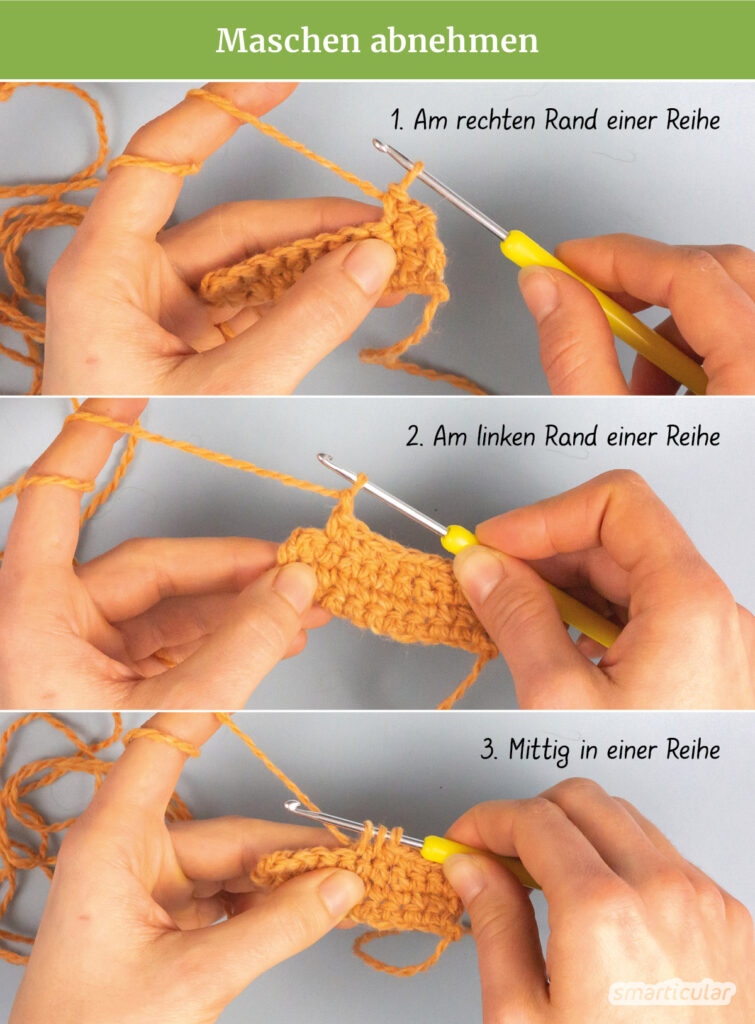
This image is property of www.smarticular.net.
Understanding Crochet Patterns
Reading symbols and abbreviations
Crochet patterns often use a combination of special symbols and abbreviations to represent different stitches and techniques. While these symbols and abbreviations may seem confusing at first, they are the key to understanding and following crochet patterns. By familiarizing yourself with commonly used symbols and abbreviations, you’ll be able to decipher patterns more easily. Many resources, such as books and websites, provide guides and charts that explain the meanings of different crochet symbols and abbreviations.
Following written instructions
In addition to symbols and abbreviations, crochet patterns also include written instructions that guide you through each step of the project. These instructions typically include the number of stitches to be made, the type of stitch to be used, and any specific techniques or variations required. It’s important to read and understand the pattern instructions carefully before starting your project. Take your time, refer to any included stitch explanations, and don’t be afraid to seek clarification or assistance if something is unclear.
Working with charts
Crochet charts or diagrams offer a visual representation of a pattern, using symbols and grids to illustrate the stitches and their placement. While charts may seem intimidating at first, they can be invaluable tools for understanding complex patterns and stitch patterns. By following along with the chart and comparing it to the written instructions, you can gain a clearer understanding of how the stitches should be worked. With practice, reading crochet charts can become second nature and open up a whole new world of patterns and designs for you to explore.
Troubleshooting Common Issues
Tension problems
Maintaining consistent tension in your stitches is one of the most common challenges faced by beginners. Tension refers to the degree of tightness or looseness with which you hold the yarn as you work. If your stitches are too tight, they can be difficult to work into, resulting in frustration and uneven fabric. On the other hand, if your stitches are too loose, your project may lack structure and stability. The key to achieving the right tension is practice and experimentation. Try different techniques, such as adjusting the way you hold the yarn or changing hook sizes, until you find a tension that feels comfortable and produces even stitches.
Dropped or added stitches
Another common issue beginners may encounter is accidentally dropping or adding stitches. This can happen when you lose track of your stitch count or inadvertently skip or add stitches as you work. Dropped stitches can cause gaps or holes in your fabric, while added stitches can lead to uneven edges or misshapen projects. To avoid these problems, it’s important to count your stitches regularly and double-check your work at the end of each row or round. Using stitch markers or keeping a tally can help you stay on track and maintain the correct stitch count.
Fixing mistakes
Making mistakes while crocheting is inevitable, even for experienced crafters. The good news is that most mistakes can be easily fixed or corrected. If you notice an error in your work, such as a missed stitch or a misshapen section, don’t panic. Depending on the mistake, you may be able to simply unravel a few stitches and rework them correctly. Alternatively, you can use techniques like “frogging,” which involves ripping out larger sections of your project to the point where the mistake occurred and then re-crocheting from there. Remember, mistakes are part of the learning process, and the ability to fix them will only improve as you gain more experience.
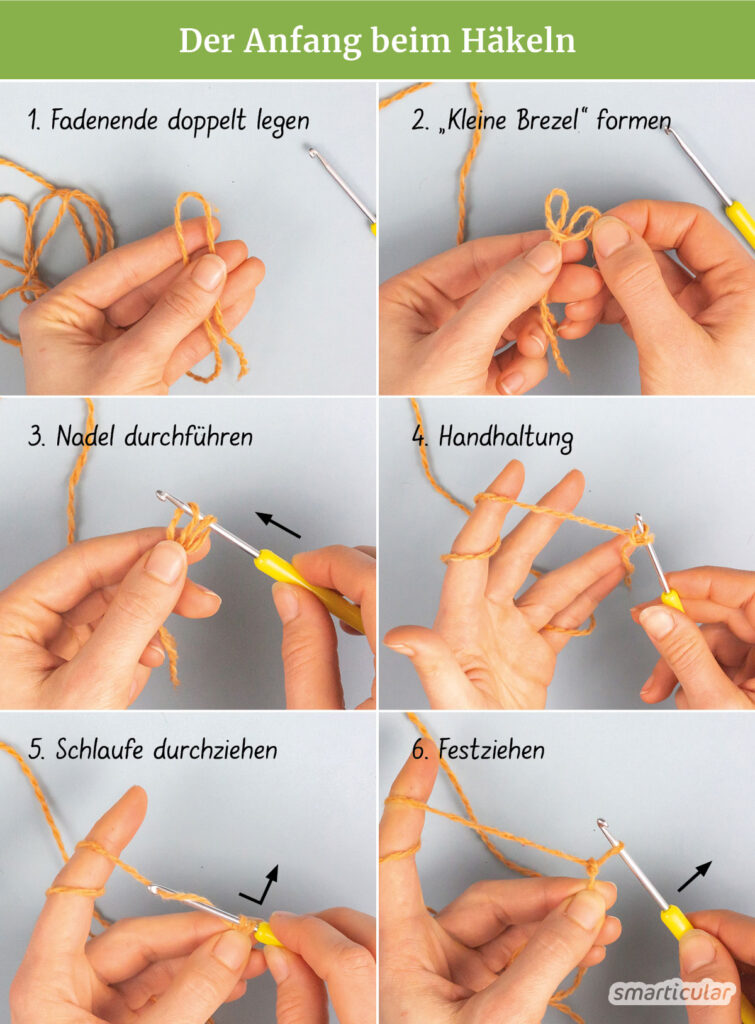
This image is property of www.smarticular.net.
Mastering Advanced Crochet Techniques
Colorwork and color changes
Once you’ve mastered the basics, you can expand your crochet skills by exploring colorwork and color changes. Colorwork involves using multiple colors of yarn in the same project to create patterns, designs, or pictures. You can learn techniques like tapestry crochet, where you carry different colored strands within your stitches, or intarsia crochet, where you use bobbins to change colors. Color changes can add depth and visual interest to your creations, allowing you to personalize patterns and make them truly unique.
Texture and stitch patterns
If you’re looking to add more dimension and texture to your crochet projects, experimenting with different stitch patterns can be incredibly rewarding. From raised cables and intricate lacework to bobbles and popcorn stitches, there are countless stitch patterns to explore. Each stitch pattern creates a unique texture, allowing you to create blankets, scarves, and other items with a rich visual and tactile appeal. Learning and mastering these advanced stitch patterns will give your projects a professional and eye-catching finish.
Shaping and joining
As you become more confident in your crochet abilities, you can start working on projects that require shaping and joining techniques. Shaping involves increasing or decreasing stitches strategically to create curves, angles, or three-dimensional shapes. This skill opens up possibilities for creating garments like sweaters, hats, and mittens. Joining techniques enable you to stitch together different components of your project seamlessly. Whether you’re joining squares to make an afghan or attaching sleeves to a cardigan, mastering the art of seamless joining will elevate the quality and appearance of your crochet work.
Exploring Different Crochet Projects
Scarves and shawls
Scarves and shawls are great projects for beginners or those looking for quick and satisfying makes. They offer the opportunity to practice basic stitches and experiment with different yarns and colors. Whether you prefer a simple, classic design or a more intricate lace pattern, there’s a scarf or shawl pattern out there to suit your taste. These accessories make fantastic gifts and can be worn year-round, providing warmth and style.
Hats and beanies
Crocheting hats and beanies is a popular choice for crafters who want to create functional and fashionable headwear. From slouchy beanies to cozy winter hats, the possibilities are endless. Hat projects allow you to practice shaping techniques and experiment with different stitch patterns. You can customize your creations with embellishments like pom-poms, ribbons, or buttons, making each hat a unique reflection of your personal style.
Blankets and afghans
Blankets and afghans are larger-scale projects that require more time and dedication, but the end result is worth the effort. These cozy creations provide warmth, comfort, and a sense of nostalgia. Crocheting a blanket allows you to explore various stitch patterns, color combinations, and sizes. Whether you choose a simple granny square design or opt for a complex pattern, the process of creating a blanket or afghan will be a labor of love you can cherish for years to come.
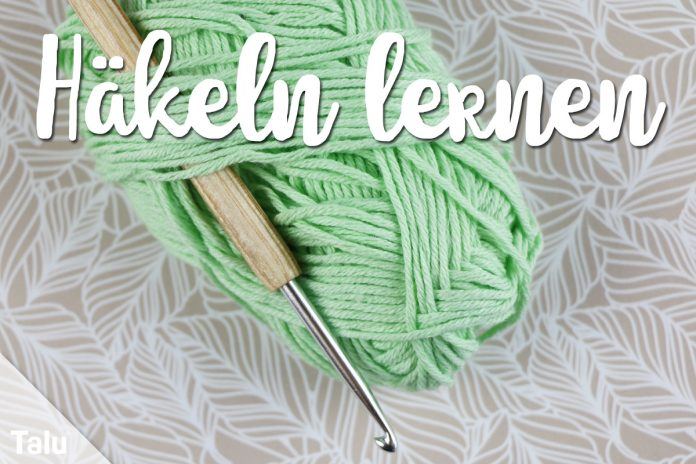
This image is property of www.talu.de.
Finding Crochet Resources and Communities
Online tutorials and videos
The internet is a treasure trove of crochet resources that can help you expand your skills and knowledge. From video tutorials on platforms like YouTube to written guides on blogs and websites, there is a wealth of information available at your fingertips. Online tutorials and videos allow you to see crochet techniques in action and follow along at your own pace. They often provide step-by-step instructions and helpful tips to ensure your success. Whether you’re a visual learner or prefer written explanations, online resources can be an invaluable tool on your crochet journey.
Crochet forums and groups
Joining online crochet forums and groups is a fantastic way to connect with fellow crafters who share your passion for crochet. These communities provide a supportive and encouraging environment where you can exchange ideas, ask for advice, and showcase your work. Members often share tips, tricks, and patterns, making it a valuable resource for learning and inspiration. Participating in these communities can foster a sense of camaraderie and help you build lasting connections with like-minded individuals from around the world.
Local crochet classes and workshops
If you prefer a more hands-on approach to learning, consider taking local crochet classes or workshops. Many community centers, yarn shops, and craft stores offer classes for all skill levels, from absolute beginners to advanced crocheters. These in-person classes provide an opportunity to learn directly from experienced instructors who can guide you through techniques, troubleshoot issues, and offer personalized feedback. In addition to learning new skills, attending classes and workshops allows you to meet and connect with fellow local crafters who share your enthusiasm.
Overcoming Challenges and Frustrations
Patience and perseverance
Learning to crochet, like any new skill, requires patience and perseverance. It’s natural to encounter challenges, make mistakes, and feel frustrated at times. However, instead of becoming discouraged, remember that every setback is an opportunity to learn and grow. Approach each new project or technique with an open mind and a willingness to practice and improve. Celebrate your progress along the way, even in small achievements, and trust that with time and effort, you’ll continue to develop your crochet skills.
Learning from mistakes
Mistakes are a valuable part of the learning process and should be embraced rather than feared. When you make a mistake, take the time to analyze what went wrong and understand why it happened. By identifying the root cause, whether it’s a misread pattern or an incorrect stitch, you can avoid repeating the same error in the future. Mistakes also offer an opportunity for creativity and problem-solving. Sometimes, a mistake can lead to a happy accident or an unexpected design element that enhances your project.
Seeking help and support
Don’t hesitate to reach out for help and support when you encounter challenges or feel stuck. Whether it’s from fellow crafters, online communities, or local crochet groups, there are always people willing to offer guidance and assistance. Sometimes, a fresh pair of eyes or a different perspective can help you overcome a hurdle or find a solution to a problem. The crochet community is known for its generosity and willingness to share knowledge, so don’t be afraid to ask for help or seek advice when you need it.
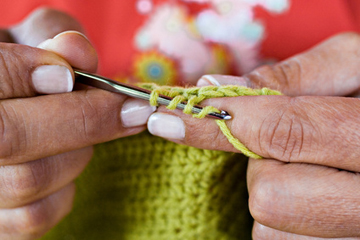
This image is property of www.kinder-tipps.com.
Tips for Successful Crochet Learning
Start with simple projects
When you’re just starting out, it’s best to begin with simple and small-scale projects. This allows you to practice basic stitches and techniques without feeling overwhelmed. Start with projects like dishcloths, coasters, or simple scarves that have a limited number of stitches and straightforward construction. As you gain confidence and proficiency, you can gradually tackle more complex patterns and larger projects.
Practice regularly
Consistency is key when it comes to learning crochet. Set aside regular time for practicing and honing your skills. Even if it’s just a few minutes each day, the more you crochet, the faster you’ll progress. Dedicate specific blocks of time to crochet, whether it’s in the morning, evening, or during your lunch break. By making crochet a regular part of your routine, you’ll build muscle memory and improve your technique more effectively.
Set achievable goals
Setting achievable goals is crucial for maintaining motivation and making progress in your crochet journey. Start by defining what you want to accomplish, whether it’s completing a certain number of projects, mastering a particular stitch, or tackling a challenging pattern. Break down your goals into smaller, manageable tasks, so you can track your progress and celebrate each achievement along the way. Remember, learning to crochet is a journey, and every step forward is an accomplishment worth celebrating.
Conclusion
Learning to crochet offers numerous benefits, from relaxation and stress relief to creative expression and a sense of accomplishment. By starting with the basics, understanding crochet patterns, and mastering advanced techniques, you can unleash your creativity and create stunning crochet projects. Along the way, you’ll find support and inspiration from online resources and communities, as well as local classes and workshops. With patience, perseverance, and a willingness to learn from mistakes, you’ll become a skilled crocheter and derive endless joy from this timeless craft. So pick up your hook, choose some beautiful yarn, and embark on a crochet journey that will bring you a lifetime of creativity and fulfillment. Happy crocheting!
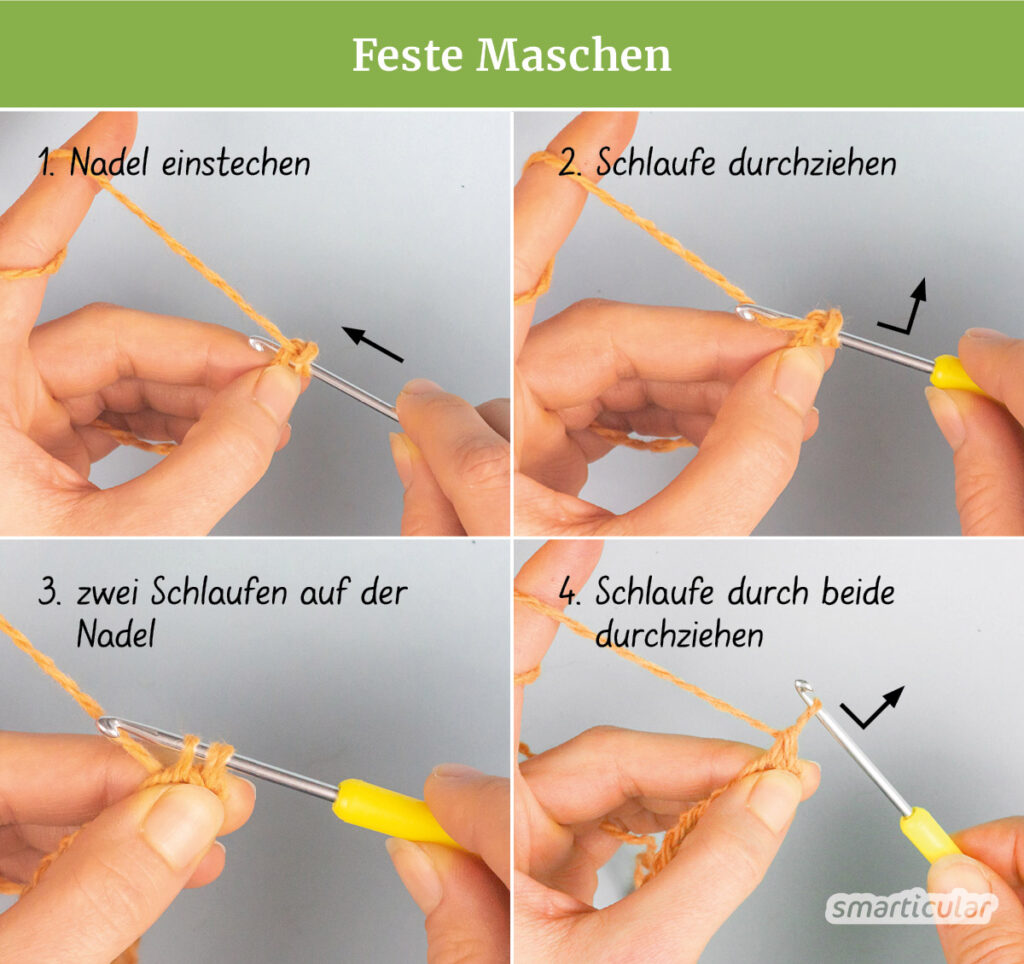
This image is property of www.smarticular.net.
